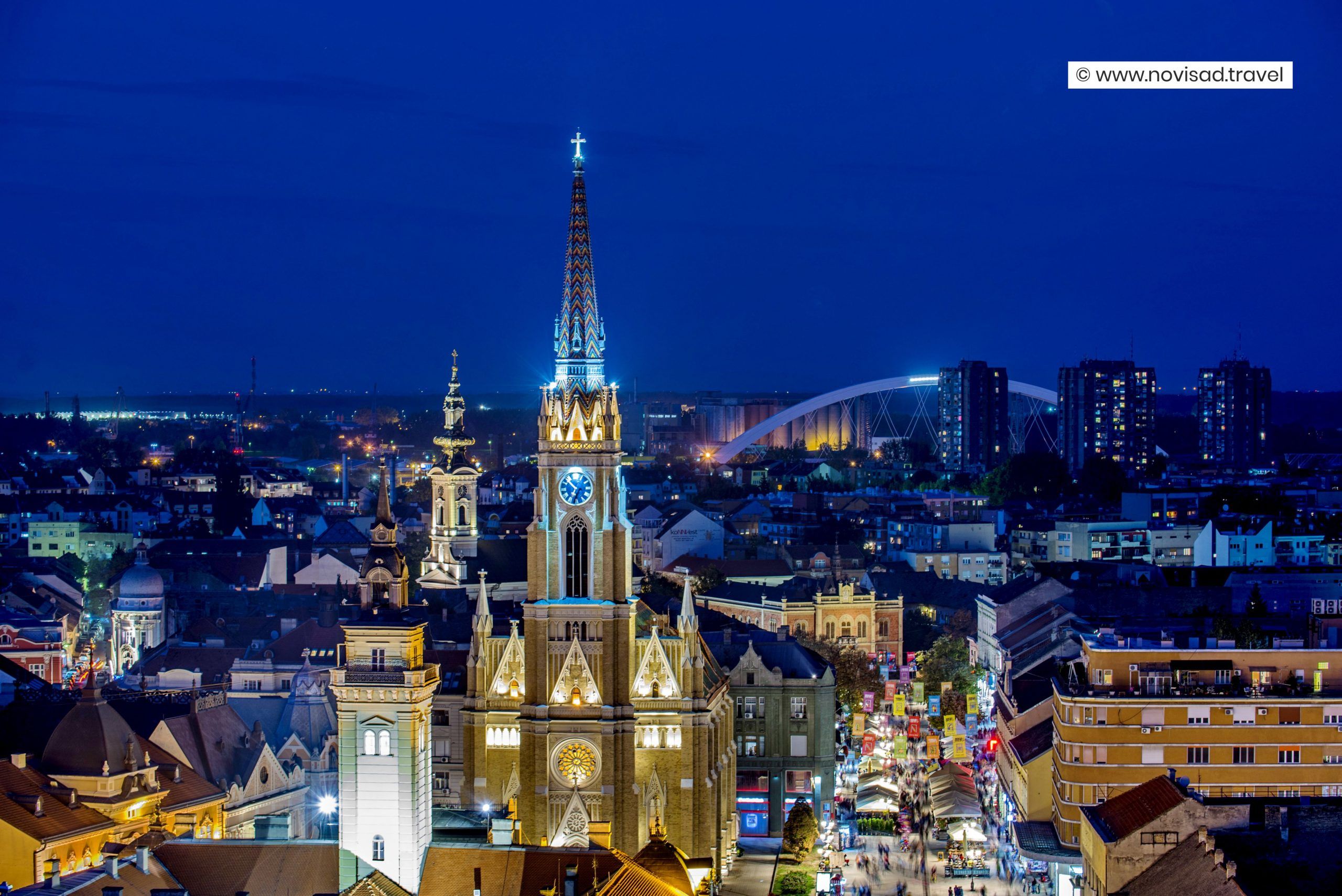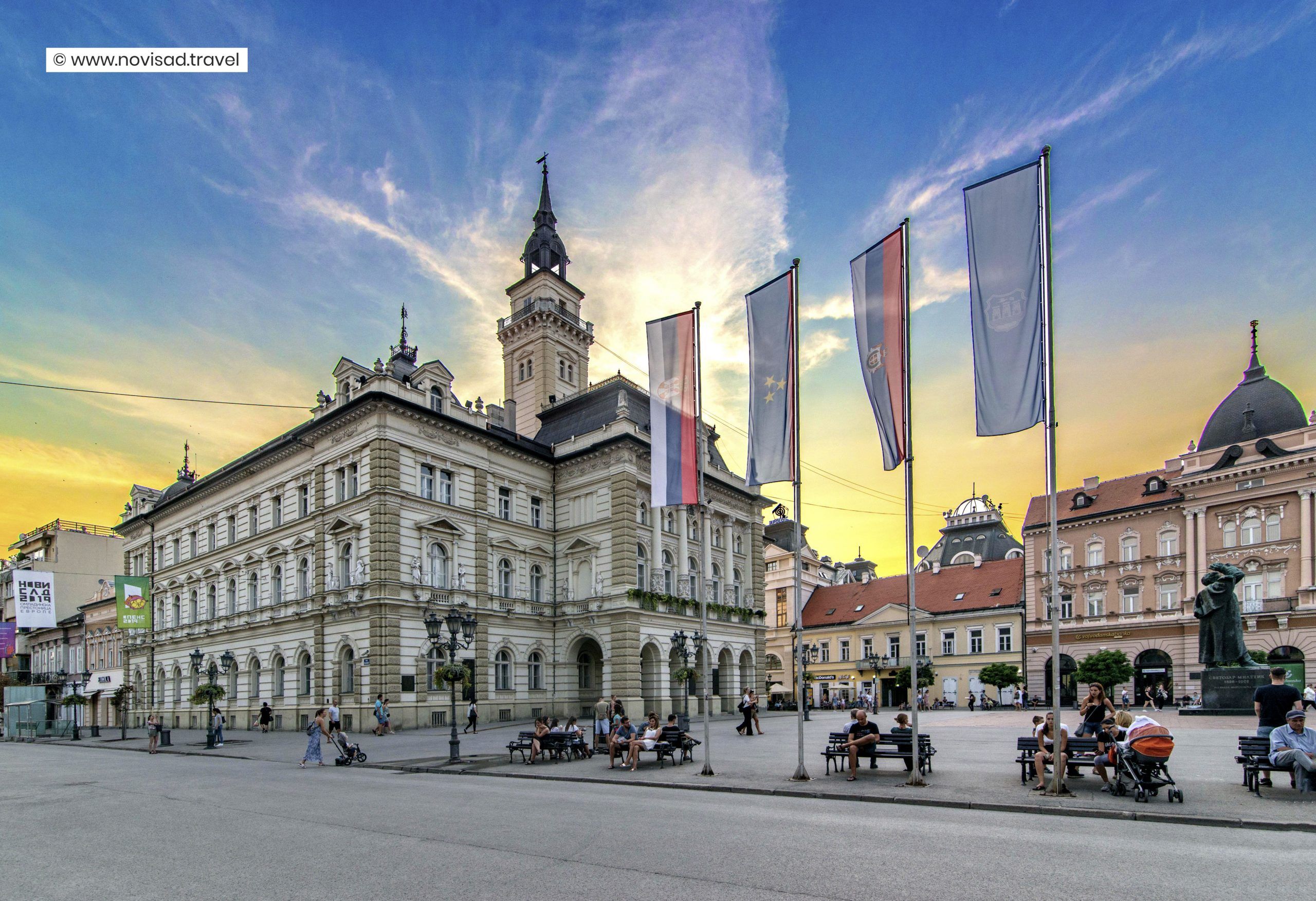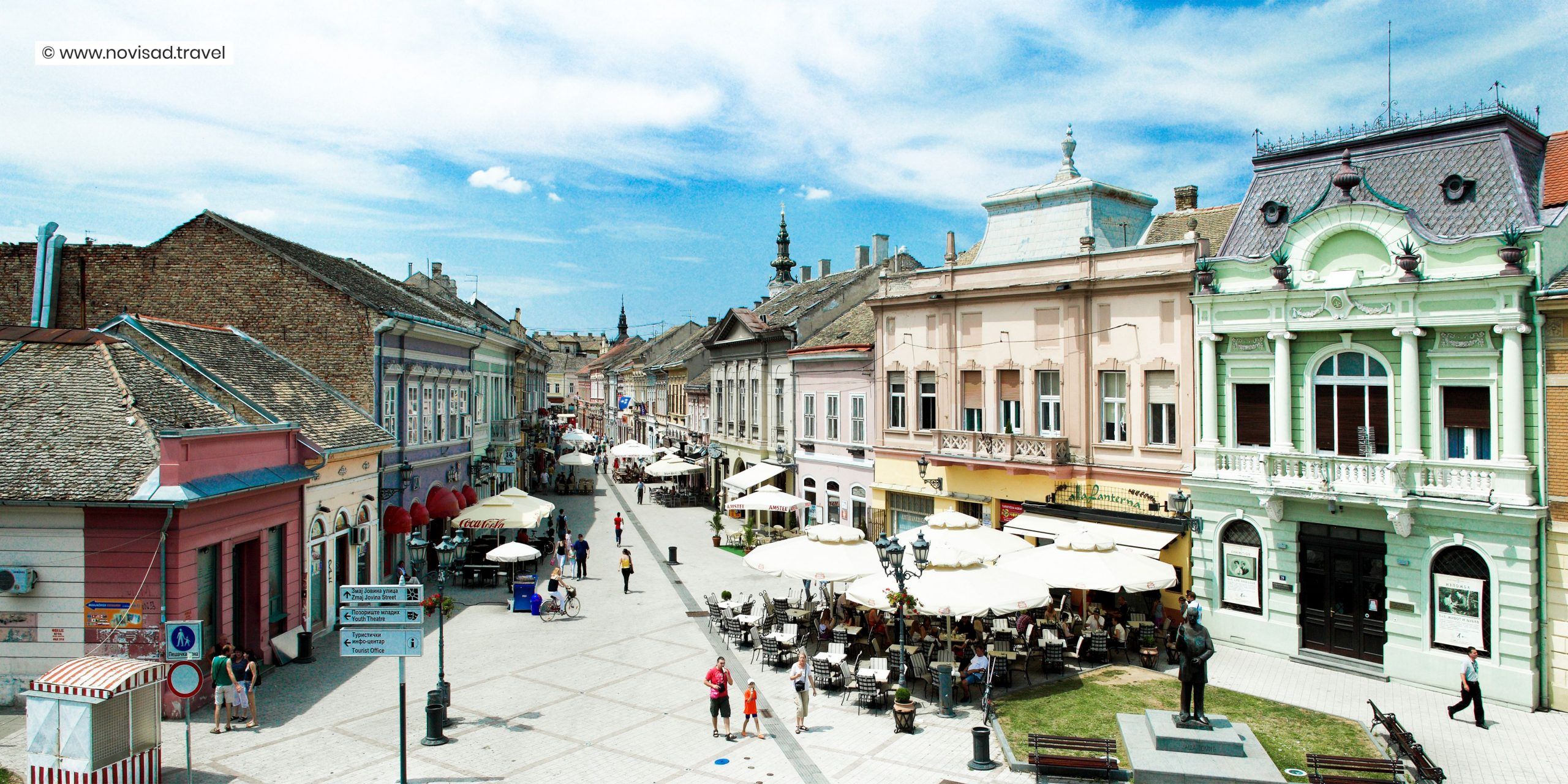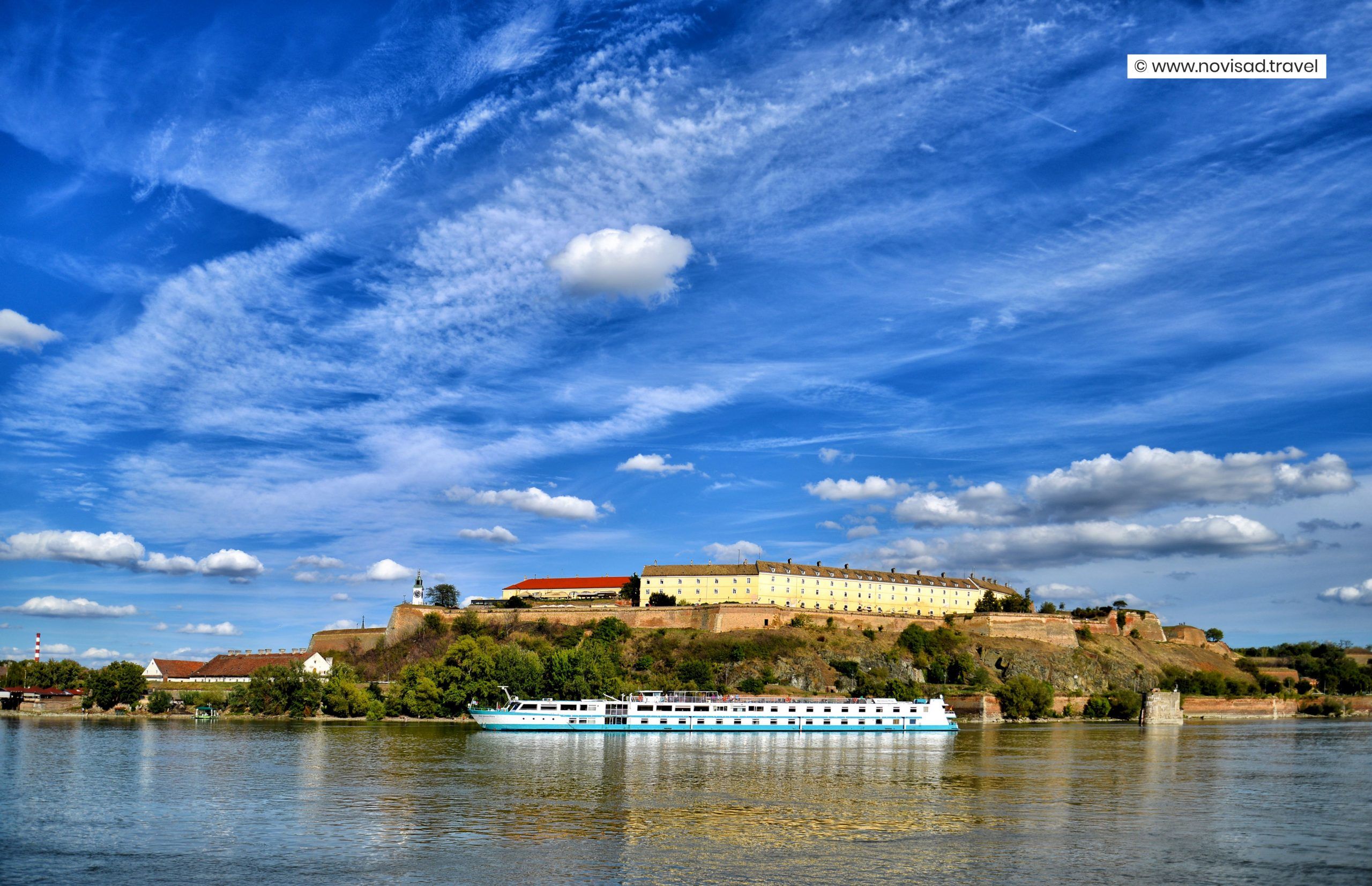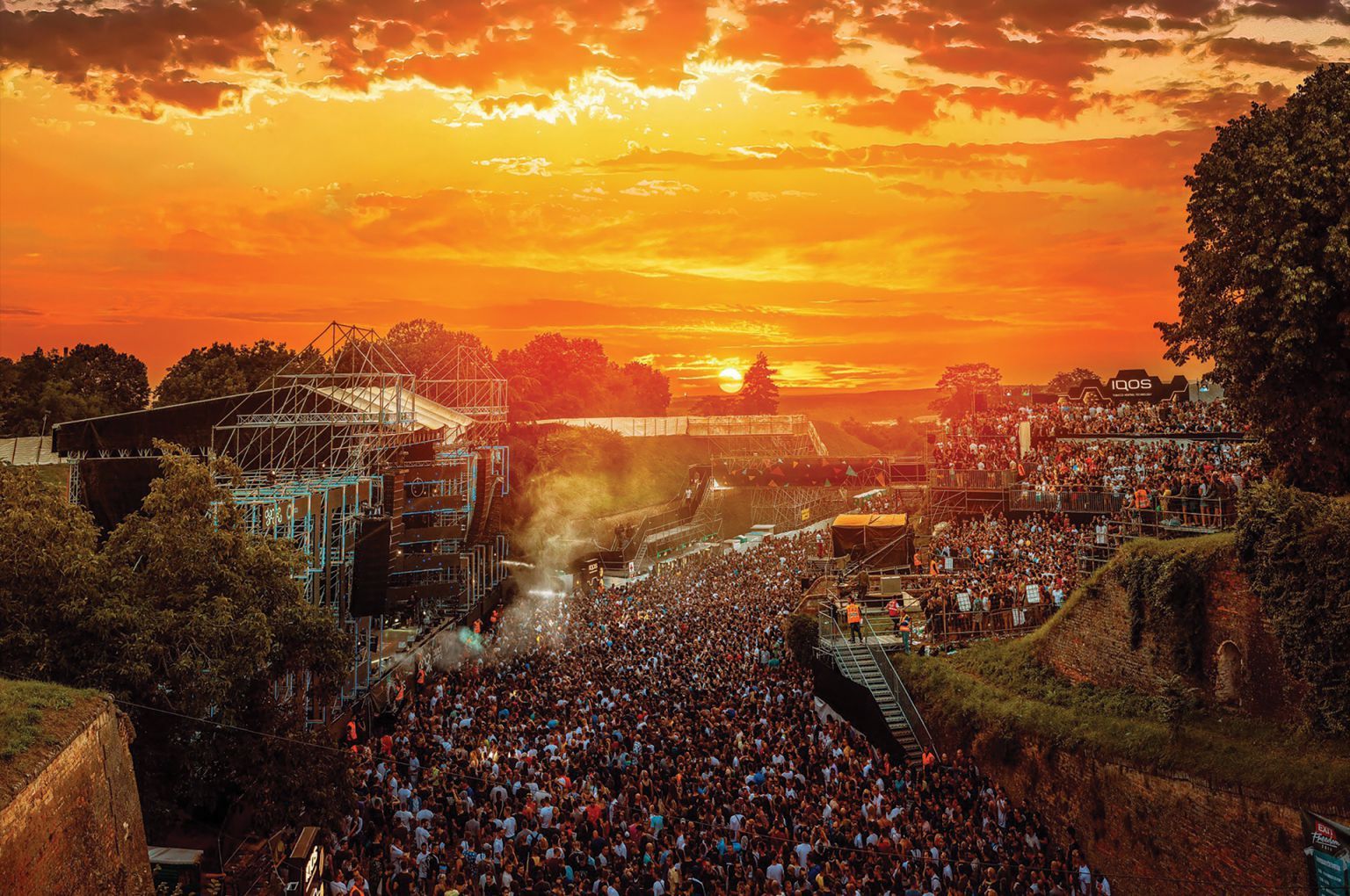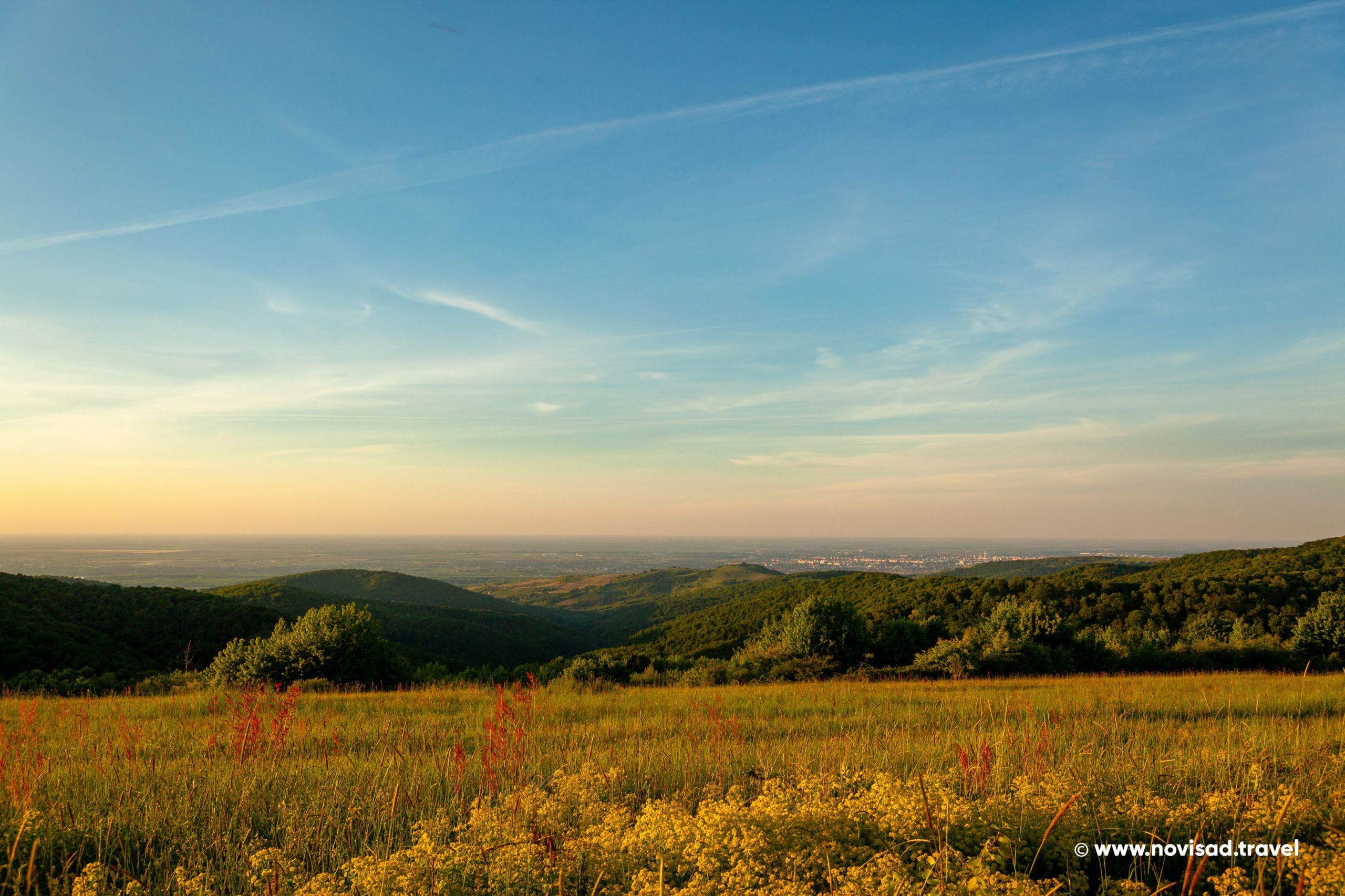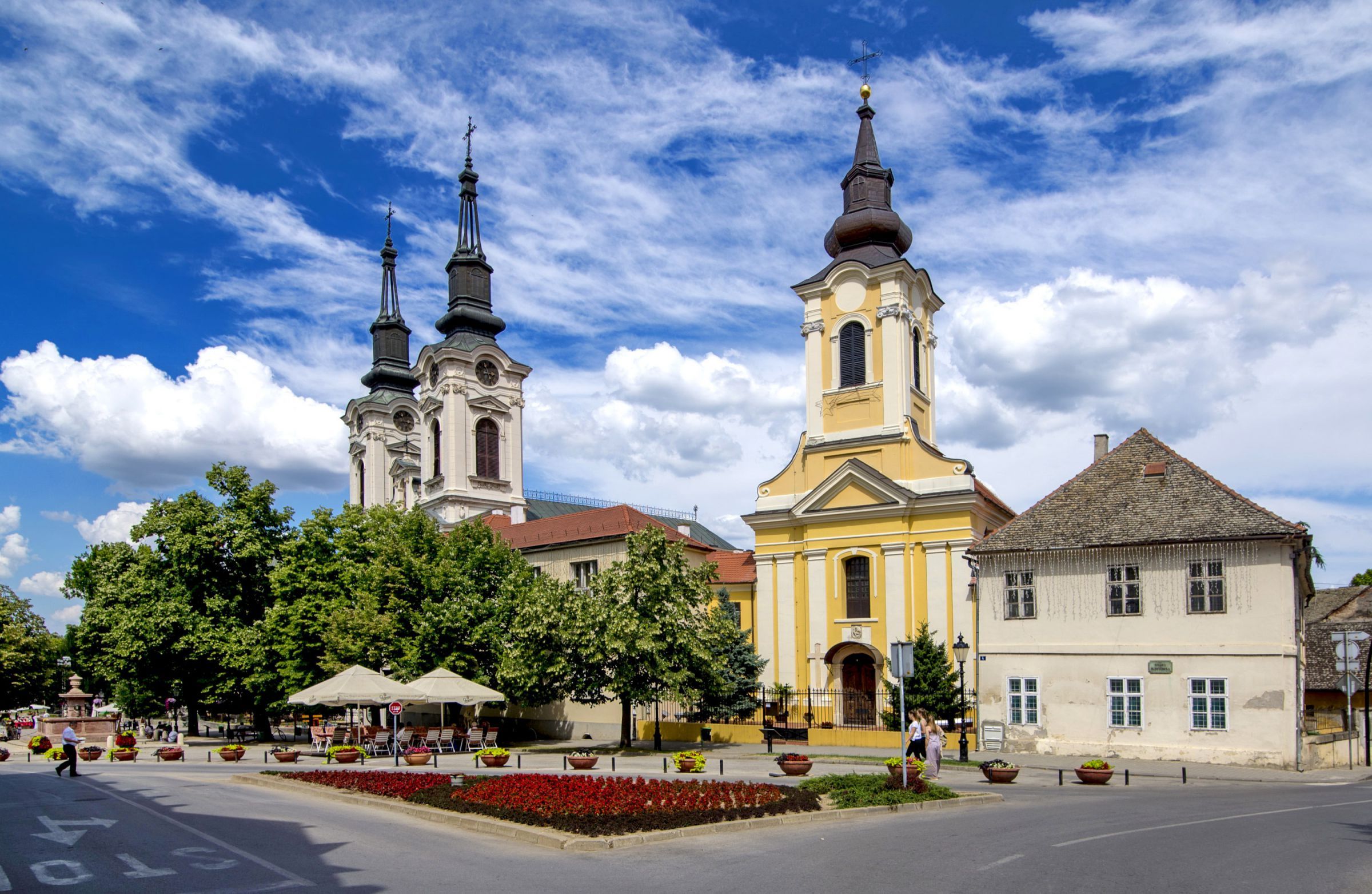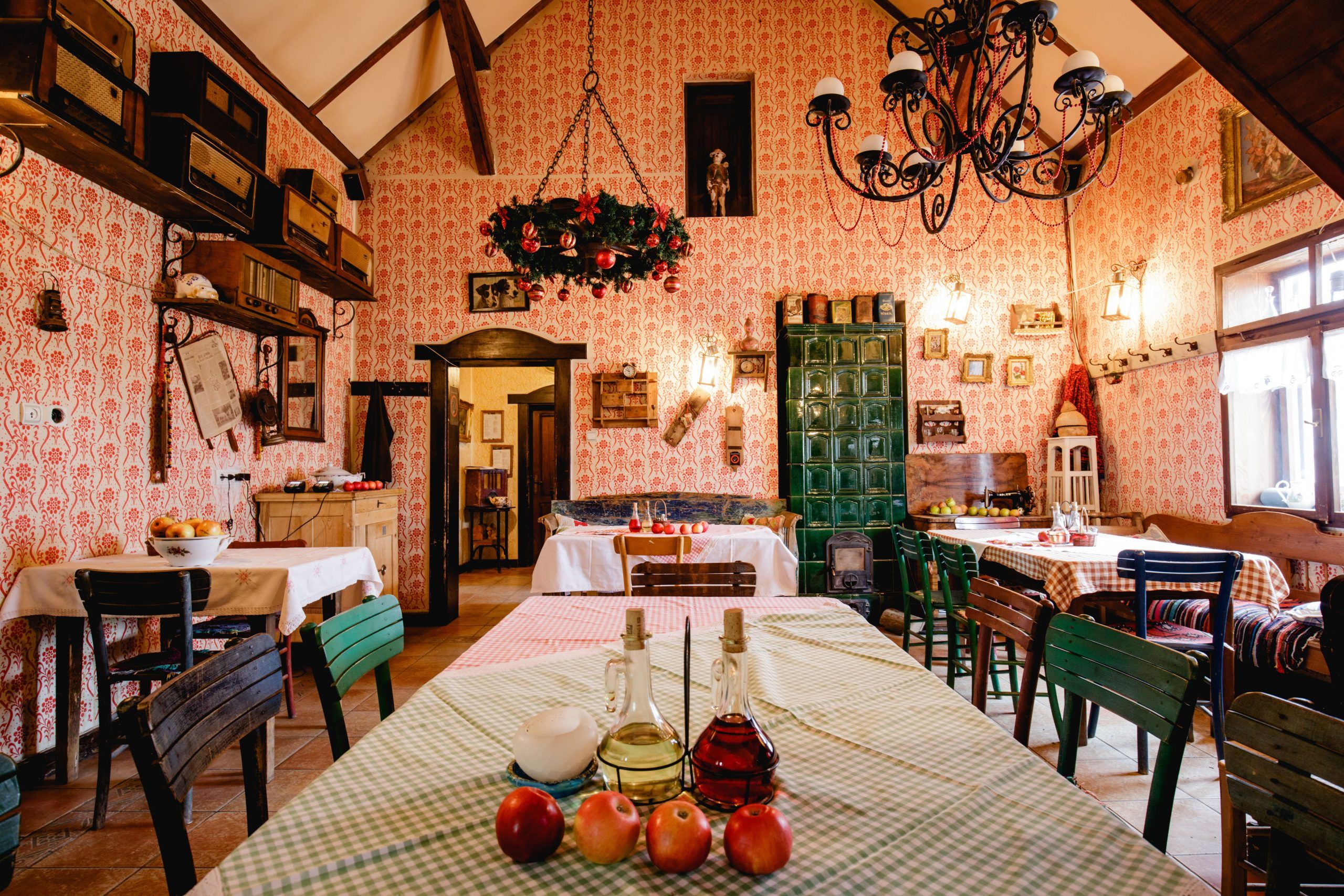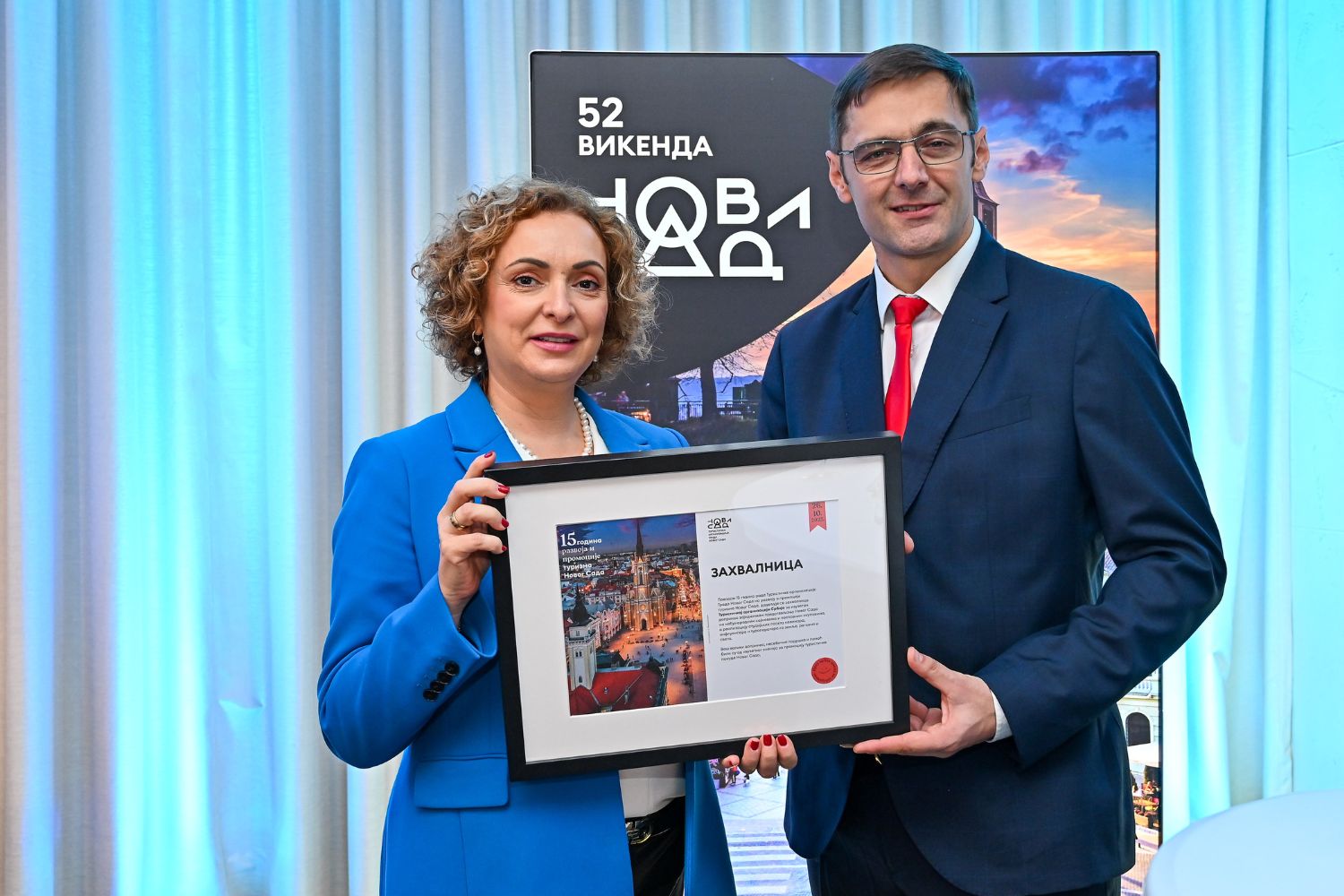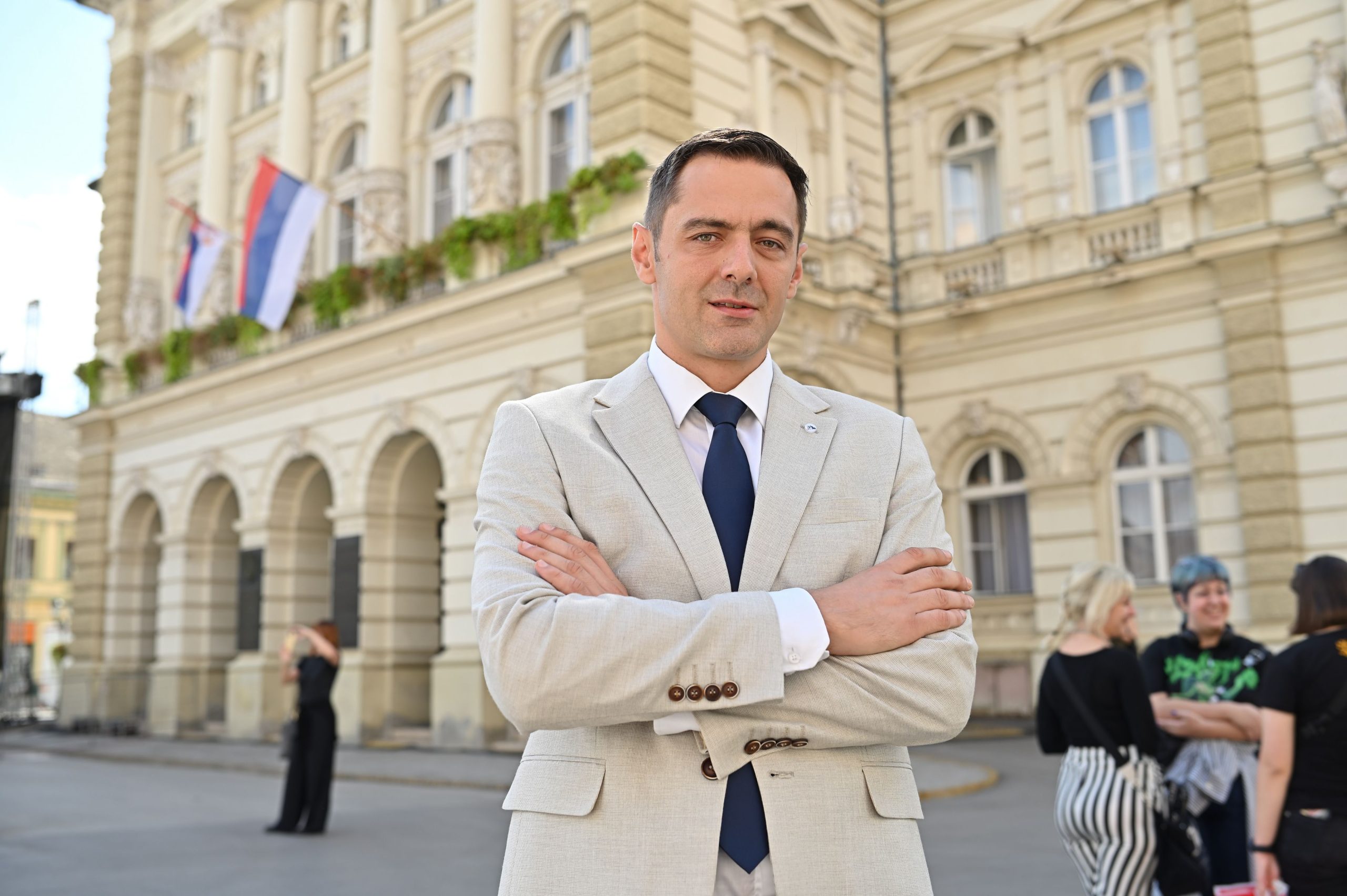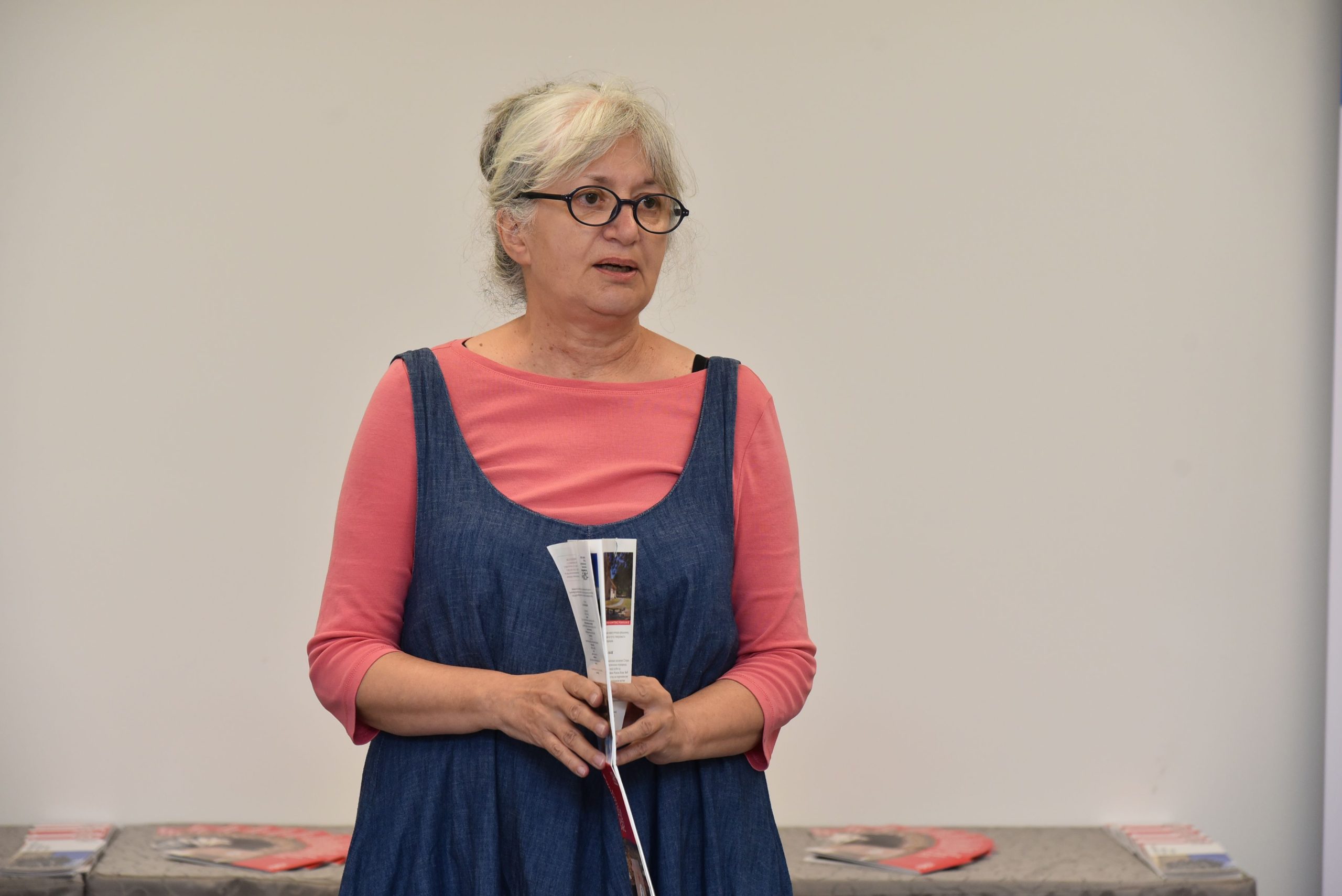About Novi Sad
For as long as it has existed under the names of Novi Sad /Újvidék/ Neusatz, the city has been the space of diverse and rich cultural heritage of many ethnicities. Tangible and intangible cultural heritage created during the past three centuries represent the foundations of an interactive network of scientific and cultural institutions, which make modern Novi Sad the space of dynamic meeting of cultures and diverse identities. It is the city of museums, galleries, and events such as the EXIT Music Festival, which has won multiple rewards and gained international recognition.
In addition to more traditional culture, the programmes and events belonging to a new cultural matrix are emerging recently – those taking more avant-garde and alternative shapes. For decades their epicentre was the Students Cultural Centre at the so-called “Chinese Quarter”. A new creative energy that has been generated there contributed to the development of ideas and activities that won the titles of the European Youth Capital 2019 and European Capital of Culture 2022.
Novi Sad also attracts the visitors with its neatness and cosy position adjacent to the Petrovaradin Fortress, different languages spoken by its inhabitants, and the rhythm untypical for hasty and chaotic pace of an urban community. The old town is rich in baroque, neo-Renaissance, classicistic and Bauhaus buildings, and offers picnic sites, preserved eco-systems and a complex of Orthodox monasteries settled in the territory of the oldest national park in Serbia – Fruška Gora National Park. The farmsteads (farmhouses), fish restaurants (čardas) and wine routes at the outskirts of Novi Sad provide the visitors with the opportunity to experience all the richness of gastronomy and rural customs.
Novi Sad is the city that provides the visitors with the agenda of unbelievably rich content within both its urban nucleus and rural surroundings. Each visitor, according to his or her feelings for nice and pleasant, attractive and joyful, useful and accessible can create unique experience while learning about all the layers of the past and present of Novi Sad.
Novi Sad, the city on the Danube, the city with the European history and tradition and Balkan hospitality is the experience that is not to be missed.
https://novisad.travel/en/tourist-atractions/
Novi Sad, European Capital of Culture 2022
In 2022, Novi Sad will be the European Capital of Culture, together with Kaunas (Lithuania) and Esch (Luxembourg). The official opening ceremony of the title year will take place on January 13th, 2022.
Programme narrative of the ‘Novi Sad 2022 – European Capital of Culture’ project stems from the ‘4 New Bridges’ slogan. In the project, the bridges will be used to connect people, programmes and places that are crucial in making a positive impact on the City’s cultural identity. Four programme bridges (‘Love’, ‘Hope’, ‘Freedom’ and ‘Rainbow’) represent eight different programme arches within the project (‘Doček’, ‘Second Europe’, ‘Migrations’, ‘The Fortress of Peace’, ‘The Future of Europe’, ‘Heroines’, ‘Danube Sea’ and ‘ The Kaleidoscope of Culture’), that will be presented in 2022.
Novi Sad invites you with unique content of its urban centre marked with Orthodox, Catholic, and Protestant churches and the Synagogue, Baroque, Neo-renaissance, classicistic, and Bauhaus buildings, as well as those built in modern style. The traces of turbulent history and many cultures that have been replacing and intertwining each other can be found in museums and galleries. The most important are the City Museum of Novi Sad (its main building is at the Petrovaradin Fortress), Museum of Vojvodina with the Museum of Unification of Vojvodina to Serbia, Museum of Contemporary Art of Vojvodina, Gallery of Matica Srpska, Pavle Beljanski Memorial Collection, Gallery of Fine Arts – Endowment Collection of Rajko Mamuzić, Atelier 61 (one of only five tapestry ateliers in Europe), Nature Conservation Collection, and one of the largest unofficial art colonies in Europe, which gathers local artists at Petrovaradin Fortress.
https://novisad.travel/en/cultural-institutions/
Petrovaradin Fortress
Petrovaradin Fortress was built in the period from 1692 to 1780 according to the system of Marquis Sébastien de Vauban. It covers the area of 112 ha. The Fortress is divided into Upper and Lower Town (Suburbium). The Upper Town is dominated by the Clock Tower, which is famous for its hands – the large hand shows hours and the small one shows minutes. The underground military tunnels, a unique attraction of Petrovaradin Fortress, represent a four-storey communication-defence system that is 16 km long, around 1 km of which is open to visitors. In the foothill of the Fortress there is the Roman Catholic church of St. George with a convent, which was built in the baroque style in the period from 1701 to 1714. One of the largest and best-preserved fortresses with the largest informal colony of artists and with one of only five tapestry ateliers in Europe. With a lot of restaurants, it can be a good choice for a night out during the weekend.
https://novisad.travel/en/petrovaradin-fortress/
Novi Sad – The city of EXIT and other festivals
More than two hundred festivals, events and happenings are held in the city and its surroundings. EXIT Festival can be singled out according to its significance and recognisability. Exit is a multiple award-winning summer music festival, which has been held every year at the Petrovaradin Fortress since the year 2000. Many consider it the best festival venue in the world. After the recent election among the top ten festivals outside the UK within the UK Festival Awards in November 2013, EXIT was awarded the most important European Festival Award, which placed it among the top ten festivals in the most important category of major European festivals.
https://novisad.travel/en/calendar-of-events/
Fruška Gora National Park
Since pre-historic times, the area of Fruška Gora has been inhabited by many nations. Multi-ethnic population living here today cherishes historic memory about its origin, national values, rich folk heritage, literature, music and poems of local communities, and traditional way of life. These are all important potentials for tourism. Sixteen Serbian Orthodox monasteries make the most significant cultural heritage of Fruška Gora. Richness of nature, namely animal and plant wildlife, landscapes, thermal springs – spas, and lakes make the basis for tourism of special interest, as well as for recreational activities and picnics. Fruška Gora is the region of good wines such as Bermet, Frankovka, Riesling, Portuguiser, Augsburg, etc.
https://novisad.travel/en/fruska-gora-2/
Sremski Karlovci
Small historical place Sremski Karlovci, nearby Novi Sad, takes an exceptional place in the history of the Serbs because that was the center of the Serbian Metropolitanate and the place where the Orthodox Seminary was established as the second in the Orthodox world, as well as the Grammar School of Sremski Karlovci, the first grammar school among the Serbs. It is known after the monuments of culture and institutions established mainly during the 18th and 19th century, among which we can single out the Patriarch’s Palace, Congregational Church and Chapel of Peace.
https://novisad.travel/en/sremski-karlovci/
“Salaš” farmsteads, fish restaurants and gastronomy
Novi Sad has always been the place where food is very rich and meals are generous, and eaten at a slow pace. “Salaš” farmsteads, “čarda” restaurants and wine routes provide the possibility for unique gastronomic enjoyment often combined with traditional and joyful rural festivities. In the ambience typical for Vojvodina rural households, in the shade of orchards, with traditional food and good wines you can slow down the time at least for a moment and fully enjoy yourself.
https://novisad.travel/en/gastronomy/
Novi Sad Tourism Organisation

